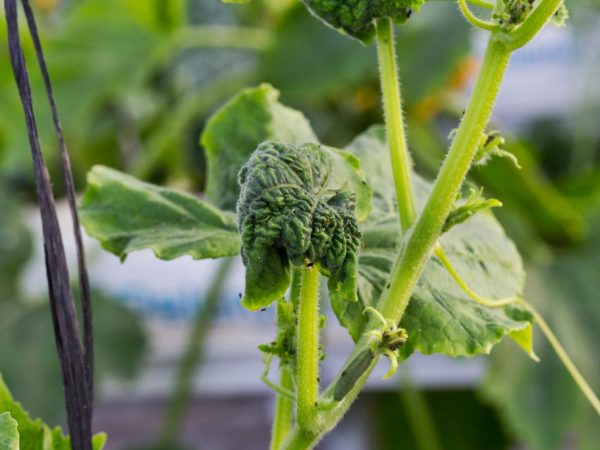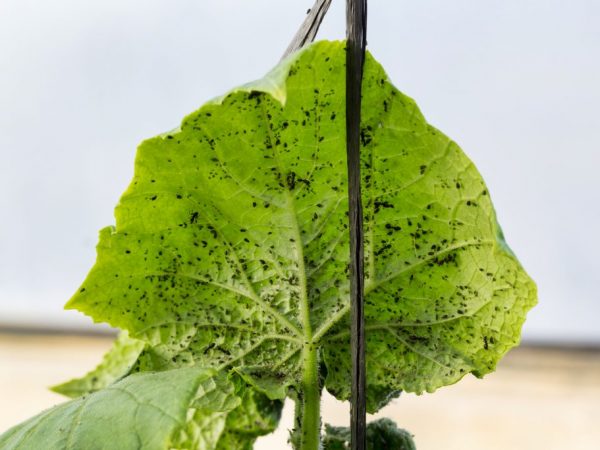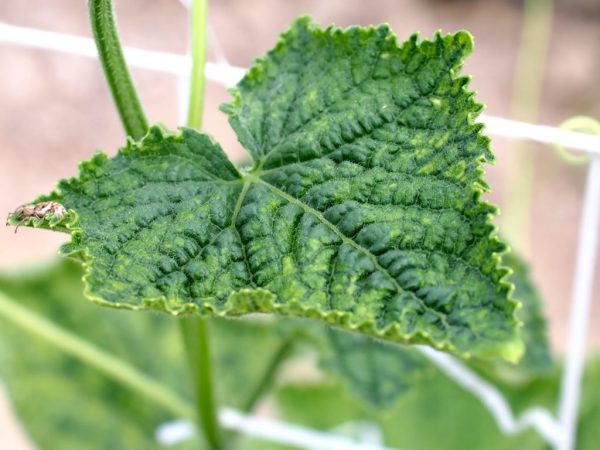Fighting aphids on cucumbers with folk remedies
Not a single garden season has been without pests. The most common of these is aphids. This small insect is located on the most delicate and juicy parts of the plant. For the fight against aphids, special preparations developed in laboratories are offered. But many gardeners prefer folk remedies for aphids on cucumbers.

Fighting aphids on cucumbers with folk remedies
Soap solutions
Folk methods of controlling insects in the beds are very simple and do not require huge investments. The easiest way to get rid of small pests on cucumbers is to simply rinse the aphids off the plant with a stream of water. This method is very simple, but it can damage the culture.
A more effective remedy is to spray the plant with soap solutions. Household, tar or ordinary liquid soap is added to solutions designed to destroy small insects so that the prepared product does not merge from the leaves, but sticks to them.
Recipe
Dissolve 200 g of soap in a bucket of water. Experienced gardeners recommend pre-grating the soap. So the solution preparation time is significantly reduced. If you do not have laundry soap at hand, you can use liquid or tar soap. It is enough to take 100 g of such soap per 10 liters of water.
Mixed solutions
Every grower is used to fighting parasites according to his own recipe. Several components are present in these solutions.
- Pour 400 g of tobacco shavings, 80 g of household or tar soap into a bucket of warm water. Leave for a day, after this time, strain the resulting composition.
- Dissolve mustard powder in warm water. The infusion is prepared for two days. Then pour the grated soap and distilled water into it. For 1 liter of water, you need 10 g of dry mustard, 60 g of soap.
Ash and soap solutions
Among all the recipes for soap solutions, a special place is occupied by those prepared using ash. Ash has a powerful disinfectant property and is capable of destroying parasites.
Vegetable growers usually use the following solutions:
- In a bucket of water, mix thoroughly 200 g of ash residue and 50 g of any soap.
- Pour the ash residue into water, bring to a boil and let this mixture boil over low heat for about 30 minutes. Allow to cool. Add soap before use. To obtain such a product, you need 10 liters of water, 300 g of ash, 40 g of soap.
Herbal infusions and decoctions
To combat aphid settlements, gardeners use infusions from various plants. Such funds must be used very carefully. Although they do not contain chemicals in their composition, they can nevertheless burn young leaves and shoots.
When using, you need to take into account some rules:
- Any remedy must be tested on a small plot of the garden bed. If this recipe has been effective, use it throughout the entire area.
- It is possible to use herbal infusions, fighting against aphid settlements on cucumber bushes, for a long period: from the appearance of the first parasite to the formation of ovaries.
Infusions

Herbal infusions will save you from the problem
Many gardeners prefer to fight parasitic insects using infusions of various herbs.
Potato tops
For the manufacture of the product, green parts that are not affected by pathogenic bacteria are selected from the tops of potatoes. They will need 1 kg. Then finely chop the tops, put them in a bucket and pour water to the top. The water should be warm, but not hot. You need to insist on such a composition for three to four hours. Then strain the solution, add 40 g of soap shavings to it.
Bow
For each liter of water, take 35 g of chopped onions. This mixture should be infused for 5 hours. Then you need to separate the precipitated sediment, dilute the resulting liquid with water to one liter and process the cucumber bushes.
Only onion skins can be used. To do this, soak half a bucket of husks in 10 liters of hot water. After infusion for 24 hours, strain. This infusion should be diluted with water. Recommended dosage: for each part of the infusion, 2 parts of water.
Garlic
Garlic infusion is prepared from 200 g of chopped garlic and one liter of water. To ripen this agent, it is kept for five days under a lid. To destroy aphid settlements, this drug is used in the form of a solution: for every 10 liters of clean water, you need to take 25 ml of garlic infusion.
Tobacco
Dry crushed tobacco leaves are poured with water at the rate of 40 g of tobacco per 1 liter of water and infused for 2 days. Then add water to double the total volume of the solution. Filter and use as directed.
Chamomile
When using chamomile, the infusion is prepared at the rate of 100 g of dry herb of pharmacy chamomile per 1 liter of water. Insist on it for 12 hours. It should be used as a solution, diluted with water in a ratio of 1: 3. It will be useful to add 5 g of laundry soap for each liter of the resulting solution.
Dandelions, marigold flowers, horse sorrel, bitter capsicum, pine needles, citrus peels are suitable for the preparation of infusions.
Decoctions

Decoctions will get rid of annoying insects
Herbal decoctions contain a wide range of useful properties, have proven themselves in the fight against parasitic insects.
Tops
To prepare a decoction from tomato tops, you need to collect five kg of green leaves and side shoots, soak them in a bucket of hot water and let them boil for half an hour over low heat. You need to use such a tool in the form of a solution in a ratio of 1: 3. It is recommended to add 30 g of soap to each bucket of the prepared solution.
Yarrow
Pour yarrow grass into the water at the rate of 50 g of grass per 1 liter of water. Put this mixture in a water bath. Warm it up for 30-40 minutes. Add water to the resulting broth so that the total volume becomes 10 liters, and leave in a dark place for two days.
Pepper
In a dish covered with a lid, boil 100 grams of fresh hot pepper, filled with one liter of water. Insist for two days. Then grind the pepper pods, strain the resulting solution. When using, the pepper broth is diluted with water in a ratio of 1:10 and 40 g of soap shavings are added to each bucket of the resulting solution.
Celandine
A decoction of celandine is prepared from 400 g of fresh stems and flowers or 100 g of dry, crushed, poured with one liter of water and left to infuse for 24 hours. The infusion will turn out to be more useful if you insist it for 36 hours. The resulting composition must be boiled over low heat for 30 minutes.
And also received good reviews from gardeners rhubarb and wormwood decoctions.
Application rules
To effectively deal with aphids, there are many folk remedies. But you need to be guided by some rules:
- Spraying cucumbers using any folk remedy should be carried out only in the evening or in cloudy weather.
- Since the favorite habitat of aphids is the lower part of the leaves, it is necessary to wash the leaves with a sponge and any of the solutions.
- Self-prepared solutions must be used on the day of their preparation. They are not subject to long-term storage.
- Alternate the recipes used so that the parasitic insects do not have time to develop immunity to a particular composition.
- Start treating plants with folk remedies when the first aphid is found.
- Treat the culture every two weeks. This will prevent aphids from multiplying.
Prophylaxis
In order to prevent aphids from appearing on cucumber plantations, it is necessary to regularly carry out preventive measures.
- Ants are the main supplier of these small pests. Therefore, you need to get rid of the anthills that are on the site using any available and effective means.
- Aphids can get on cultivated plants, crawling from the weeds. To prevent this, the beds must be weeded periodically.
- Ladybugs are very fond of eating aphids. If you plant mustard leaves next to cucumbers, then these insects will become your helpers in the fight against parasites.
- Several times a season, you need to water all the beds with a simple soapy solution.
At the beginning of each gardening season, do not forget that when planting cucumbers, it is necessary to create the most favorable and optimal conditions for plant growth. This applies to the mandatory rotation of crops in the beds, correct and timely watering and fertilization. In addition, you can not thicken the planting of cucumbers. Be sure to leave a place for weeding and airing the beds.
Conclusion
Despite the fact that aphids are a very small insect, the harm they can do to cucumbers is very great. These pests live in huge colonies. They attract other insect pests. As a result, flowers and ovary disappear on the cucumber beds. The plant does not bear fruit. But it is possible to save the planting of cucumbers from the settlements of aphids. The main thing is not to panic and start treating plants in time with folk remedies that are safer than chemicals.


